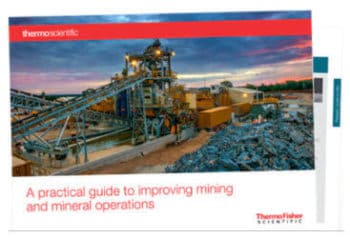 Light element analysis is notoriously challenging because of the small number of X-ray statistics light elements generate, if they can be detected at all. Technologies that can accurately detect light elements in geological samples are especially important for oil & gas exploration to more accurately locate oil-bearing strata, improve mud-logging, and support geo-steering.
Light element analysis is notoriously challenging because of the small number of X-ray statistics light elements generate, if they can be detected at all. Technologies that can accurately detect light elements in geological samples are especially important for oil & gas exploration to more accurately locate oil-bearing strata, improve mud-logging, and support geo-steering.
Portable X-ray fluorescence (XRF) instruments that offer light element analysis capability are frequently used in oil & gas exploration. Although XRF analyzers cannot analyze hydrocarbons, they provide real-time, whole-rock geochemistry at the well site—data that can be used to characterize reservoir properties that influence porosity (cements), permeability (clays, cement type), fracture population (Si content), and productivity (e.g., Si, Mg content).
Light element analysis capability at the microscopic level can also be used for analyzing geological samples with scanning electron microscopy/energy dispersive spectroscopy (SEM/EDS). EDS instruments feature Silicon Drift Detectors (SDDs) that enable high resolution, high count rate X-ray spectroscopy. With larger detector areas and lower X-ray energy detection, SDDs have largely displaced Si(Li) detectors in SEM/EDS and energy-dispersive X-ray fluorescence (EDXRF), both of which provide faster, more accurate analysis of light elements.
What are the complexities in detecting and analyzing materials where light elements are important?
Light elements are generally thought of as those with an atomic number less than 11. As the atomic number is reduced, it becomes increasingly difficult to ionize an atom, and the ionized atom produced is less likely to generate characteristic X-rays from the weaker signal that light elements produce. Light element atoms produce longer wavelength X-rays. These are much more easily absorbed within the sample than shorter wavelength X-rays. Much of the weak signal that is produced will be trapped within the sample itself. As a result of this absorption, most X-rays from light elements that reach the detector come from near the surface of the sample, which means light element analysis is more strongly affected by sample contamination or coatings applied to samples to prevent charging. The sum of these effects is that light elements can be difficult or impossible to measure and the X-ray intensities measured from these elements are more often subject to systematic errors than are intensities measured from heavier elements. All of these effects become much stronger as the atomic number is reduced.
Carbon is a special case. Carbon often accumulates as a contaminant on the surface of a sample in an electron microscope. This makes it very difficult to measure carbon reliably because one doesn’t know if the carbon signal arises from the sample itself or from the contamination deposited during analysis.
There are four options for quantifying light elements by SEM/EDS.
- Direct analysis
- Calculation by stoichiometry
- Element by difference
- Fixed concentration.
Read Options for Quantitative Analysis of Light Elements by SEM/EDS for an explanation and analytical results for each of these options.






Leave a Reply